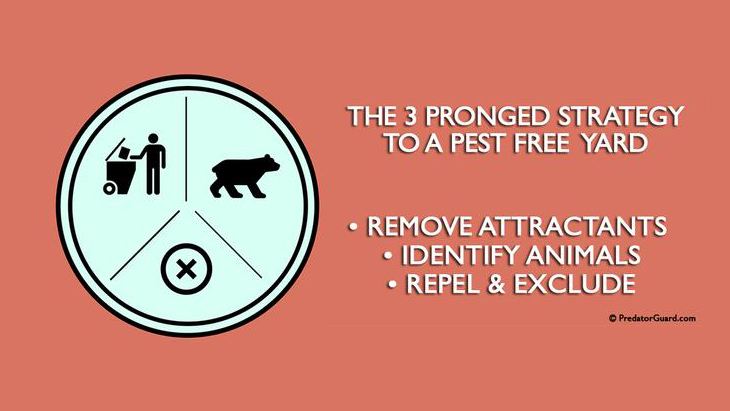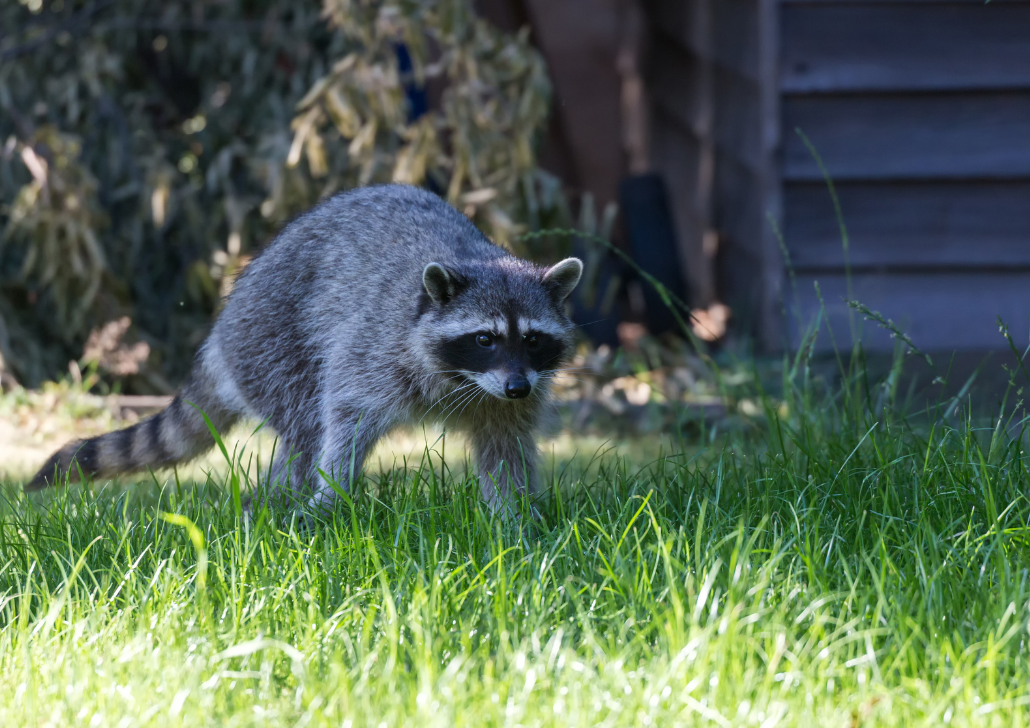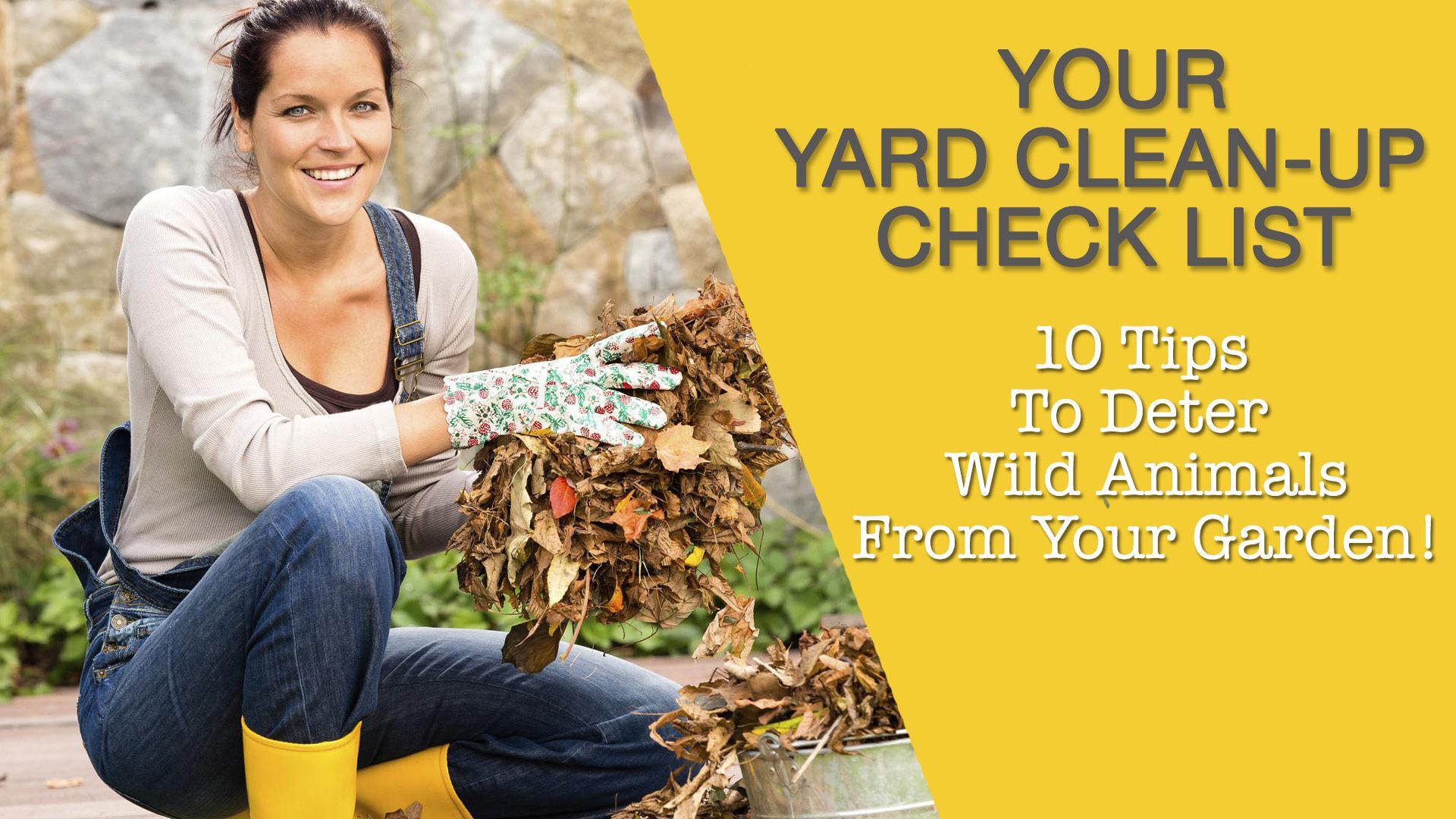The 3 Pronged Strategy To A Pest Free Yard
·

·

1. Remove Attractants
If unwanted wild animals are frequenting your home or garden, there is at least one source of food, water and/or shelter that is attracting them. The solution is to remove or alter these resources so that the area is no longer attractive.• Keep pet food indoors. Pet food left outdoors will attract wildlife to your property and can cause territorial behaviors to develop around that food source. Ask your neighbors to do the same.
• Remove bird feeders and excess bird seed from your lawn. Bird seed will not only attract birds, but rodents, rabbits, squirrels and raccoon too, which will in turn attract larger predatory animals.
• In the summer, remove fallen tree fruit.
• Secure garbage and compost containers with tight fitting lids and ‘bungee cords’, making them inaccessible to scavenging animals.
• Keep a clean and tidy yard. Remove old wood piles, junk piles,
fallen trees, hollowed logs and long grass where animals can take shelter.
2. Identify
It’s helpful to know exactly what type of animal is on your property so you can deter it effectively. Many animals will slip in and out of your yard or garden without being seen, so it’s a good idea to know what to look for when trying to figure out which animals are causing problems.
Check for tracks.
Unless you have very hard ground, concrete or rock, you should be able to distinguish at least a few paw prints in softer ground. If you suspect an animal is visiting the same location, you can spread a light covering of flour over the ground. This will help reveal any paw prints. Compare the tracks you find to the above diagram of known tracks. Cat-like prints will usually be from large cats such as a cougar or bobcat, while dog prints could mean wolves, fox or coyote, depending on the size. Deer also leave distinct marks, as do rabbits. Familiarize yourself with the footprints of animals commonly found in your area to make identification simpler.
3. Exclude & Repel
Once you have identified the intruding animal, most often exclusion is the simplest and most effective solution in managing a nuisance animal. This may involve using heavy-duty hardware cloth (not screen wire, as most animals can tear through screen), sheet metal, lumber, mortar or other inpenetrable materials.• Keep sheds and buildings in good repair. Fix any holes. Close off any crawl spaces or areas beneath decks and porches. Screen all attic, porch or foundation vents with heavy duty wire mesh.
• Prune or remove tree limbs hanging over the roof. Cut back vines clinging to walls and trees. Seal up any broken soffits or vents around roofline or attics.
• Use fencing to reduce access to vegetable or ornamental gardens and ponds.
After all entrances are closed, a repellent or deterrent method will help send animals to another location to seek food or shelter. You may need to employ several methods for best effect. Taste and smell deterrents will stop an animal who is already digging or foraging in a garden or lawn area.
These may include:
• predator urine (this make animals think there is a larger predator in the region)
• hot pepper flakes or sprays,
• blood meal in gardens to repel herbivores like rabbits and deer.
• plant deer resistant plants around the perimeter of your gardens
Once the animals are driven away and entrances closed, the problem is most often solved.
Scare tape, flashing deterrent lights or ultrasonic sound repellers will ensure any new intruders stay away.
Purchase Predator Guard deterrent lights to repel wild animals who hunt at night.




